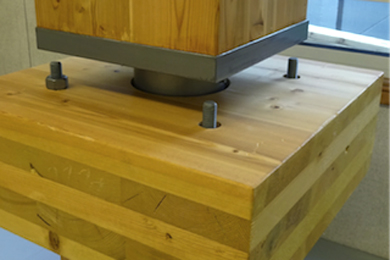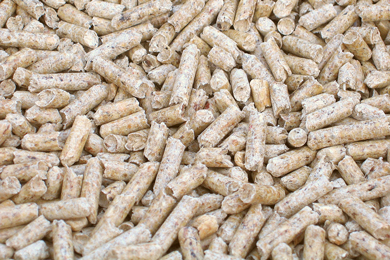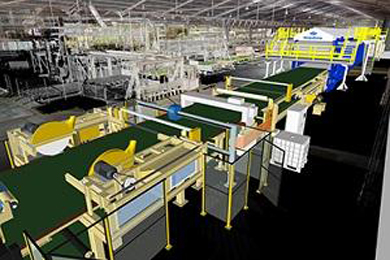Engineered wood eases labour constraints for commercial building – Labour shortages are limiting growth in both commercial building, with the recent profit downgrades at Fletcher Challenge highlighting the depth of the problems. However, commercial wood solutions already being implemented by industry leaders in Australia, Canada and New Zealand and hold the key to removing labour constraints. Engineered wood building components using automated manufacture to reduce labour content and speed project completions. (Photo: The post connection at the heart of the Brock Commons timber structure)
The engineering of wood components for commercial building is growing fast in Australia. Local builders and developers, led by smart operators like Lendlease and Strongbuild, in Australia’s major cities, have worked out how to automate many of the large building jobs using factory prefabrication. Case studies of their recent successes feature in an engineered timber conference coming to Rotorua in September.
Conference director John Stulen says, “Right now there’s a surprising contrast – the leading builders and developers working with wood for commercial building are finishing projects on time, on budget, without the constraints or problems blamed by the very large construction companies like Fletcher Challenge for their profit shortfall.”
“In fact, the world’s tallest timber building, at 18 stories high, Brock Commons, in Vancouver, Canada was delivered ahead of schedule,” says Stulen, “and we’ve got their lead project manager as our keynote speaker coming to our conference.”
Local designers and architects are now rapidly realising that a range of the products offered by engineered wood manufacturers get around many potential problems with challenging builds – and labour is just one of the issues that are solved by using automated manufacturing for wood panel floors, walls and engineered beams to reduce labour content.
Stulen predicts, “The next big thing set for speeding up construction jobs is timber floor cassettes. Commercial builders, developers and designers will be seeing many more solutions with these systems soon. The overall project savings from wood solutions are obvious and being captured by leaders in this industry – our conference will be full of case studies showing how wood solves many problems that traditional commercial construction practices and materials can’t.”
The conference, “Changing Perceptions of Engineered Timber in Construction” is running on 28 September in Rotorua. It’s the second annual conference and attracts building owners, developers, architects, engineers, specifiers and many service and supply companies. The theme is “Advantages of Timber in Mid Rise Construction.”
The Rotorua Lakes Council are active event partners promoting their successful “Wood-First” policy. Rotorua is home to many wood manufacturing businesses including New Zealand’s largest solid wood producer – Red Stag Timber.
The conference is set to be part of a wood technology week of events coming to the city in September, including the FIEA WoodTECH 2017 two-day conference and trade expo.










